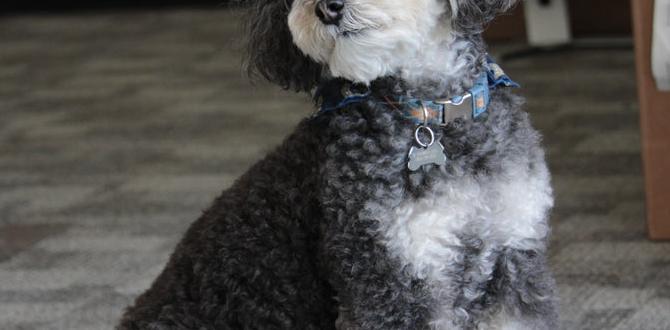Fearful dog symptoms can be a heartbreaking and challenging aspect of pet ownership. Witnessing your beloved companion live in a state of anxiety and distress is difficult, but understanding the signs and implementing effective techniques can significantly improve their quality of life. This comprehensive guide will delve into identifying common fearful dog symptoms and explore proven strategies to help your canine friend overcome their anxieties.
Recognizing the Signs: Common Fearful Dog Symptoms
Fear in dogs manifests in a wide range of behaviors, often stemming from past negative experiences, a lack of socialization, genetic predisposition, or even physiological changes. Identifying these signs is the crucial first step towards providing effective support.
Body Language: A fearful dog will often display subtle, and sometimes not-so-subtle, physical cues. This can include a tucked tail, flattened ears, avoiding eye contact, lip licking, yawning (when not tired), panting excessively, trembling or shaking, and a stiff or rigid body posture. They might also try to make themselves appear smaller or freeze in place.
Vocalization: Whining, whimpering, and excessive barking are common vocalizations of fear and anxiety. This can be directed at the perceived threat or be a general expression of discomfort.
Avoidance and Escape Behaviors: A fearful dog will actively try to remove themselves from the situation or stimulus causing their fear. This might involve hiding behind their owner, attempting to flee, or refusing to move.
Defensive Aggression: In some cases, fear can escalate to aggression. This is usually a last resort, a desperate attempt to create distance from something they perceive as a threat. Signs can include growling, snapping, or even biting. It’s important to remember that this aggression is rooted in fear, not malice.
Destructive Behavior: When left alone or feeling overwhelmed, some fearful dogs may engage in destructive behaviors such as chewing furniture, scratching doors, or digging. This can be a way to self-soothe or release pent-up anxiety.
Changes in Appetite and House-Soiling: Fear and stress can significantly impact a dog’s digestive system, leading to a loss of appetite or even an upset stomach. Unexplained accidents in the house, especially in previously well-trained dogs, can also be a sign of extreme anxiety or fear.
Effective Techniques for Addressing Fearful Dog Symptoms
Once you’ve identified the signs of fear in your dog, it’s time to implement strategies to help them feel more secure and confident. The key is patience, consistency, and a deep understanding of your individual dog’s needs.
Positive Reinforcement and Counter-Conditioning
This is perhaps the cornerstone of addressing fear in dogs. The goal is to change your dog’s emotional response to the fear-inducing stimulus from negative to positive.
Counter-Conditioning: This involves pairing the frightening stimulus with something your dog loves, like high-value treats, a favorite toy, or praise. For example, if your dog is afraid of thunder, you would start playing a recording of thunder at a very low volume while giving them special treats. As they become more comfortable, you gradually increase the volume. The idea is that eventually, the sound of thunder will predict good things (treats!).
Desensitization: This technique involves gradually exposing your dog to the fear-eliciting stimulus at a low intensity, so low that it doesn’t trigger their fear response. Once they are comfortable, you slowly increase the intensity of the exposure. This is often done in conjunction with counter-conditioning.
Creating a Safe Space and Routine
A predictable environment can greatly reduce anxiety for fearful dogs.
Safe Den: Provide your dog with a designated safe space, such as a crate, a bed in a quiet room, or a cozy nook. This area should be a sanctuary where they can retreat when feeling overwhelmed and should never be used for punishment. Equip it with comfortable bedding and familiar toys.
Consistent Routine: Dogs thrive on routine. Regular feeding times, walks, and playtime can help them feel more secure. Predictability reduces uncertainty, which is a major trigger for fear.
Managing the Environment
Making conscious choices about your dog’s environment can prevent them from being exposed to unnecessary stressors.
Identify Triggers: Become a detective and pinpoint what specifically triggers your dog’s fear. Is it other dogs, certain sounds, strangers, specific objects, or being left alone?
Avoidance (Initially): While working on desensitization and counter-conditioning, it’s often best to temporarily avoid situations that overwhelmingly trigger your dog’s fear. This doesn’t mean you’ll avoid them forever, but it prevents them from getting overwhelmed and reinforcing their fearful responses.
Muffle Sounds: For noise phobias, consider using white noise machines, playing calming music, or closing windows and doors to reduce the intensity of frightening sounds.
Training and Socialization (Done Properly)
While not always applicable to severe fear, basic obedience and controlled socialization can build confidence.
Obedience Training: Teaching basic commands like “sit,” “stay,” and “come” can help build your dog’s confidence and strengthen your bond. It provides them with a sense of control and predictability.
Controlled Socialization: For dogs fearful of other dogs or people, controlled and positive introductions are crucial. This means meeting calm, well-behaved dogs or individuals in a controlled setting, at your dog’s pace, and always rewarding positive interactions. Never force an interaction.
Seeking Professional Help
For severe cases of fear or when you’re not seeing progress, professional guidance is invaluable.
Veterinarian: Rule out any underlying medical conditions that might be contributing to your dog’s anxiety. Your vet can also discuss potential anxiety-reducing medications or supplements.
* Certified Professional Dog Trainer (CPDT) or Veterinary Behaviorist: These professionals can assess your dog’s specific fear triggers and develop a tailored training plan. They have expertise in behavior modification techniques and can guide you through complex cases.
By understanding the nuances of fearful dog symptoms and diligently applying these effective techniques, you can empower your canine companion to live a happier, more confident life. Remember that every dog is an individual, and progress may be slow. Celebrate small victories, remain patient, and cherish the journey of helping your furry friend overcome their fears.
Meet Elyse Colburn, the devoted canine companion and storyteller behind the enchanting world of “Tales, Tails, and Adventures Unleashed.” A passionate dog enthusiast with a heart full of paw prints, Elyse Colburn shares heartwarming tales and insightful adventures, celebrating the joy, loyalty, and endless antics that make every dog a true hero. Join Elyse Colburn on this tail-wagging journey, where every post is a love letter to our four-legged friends.






